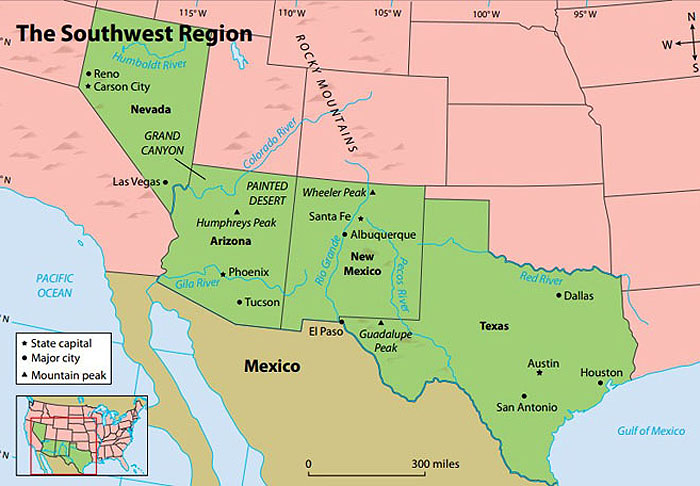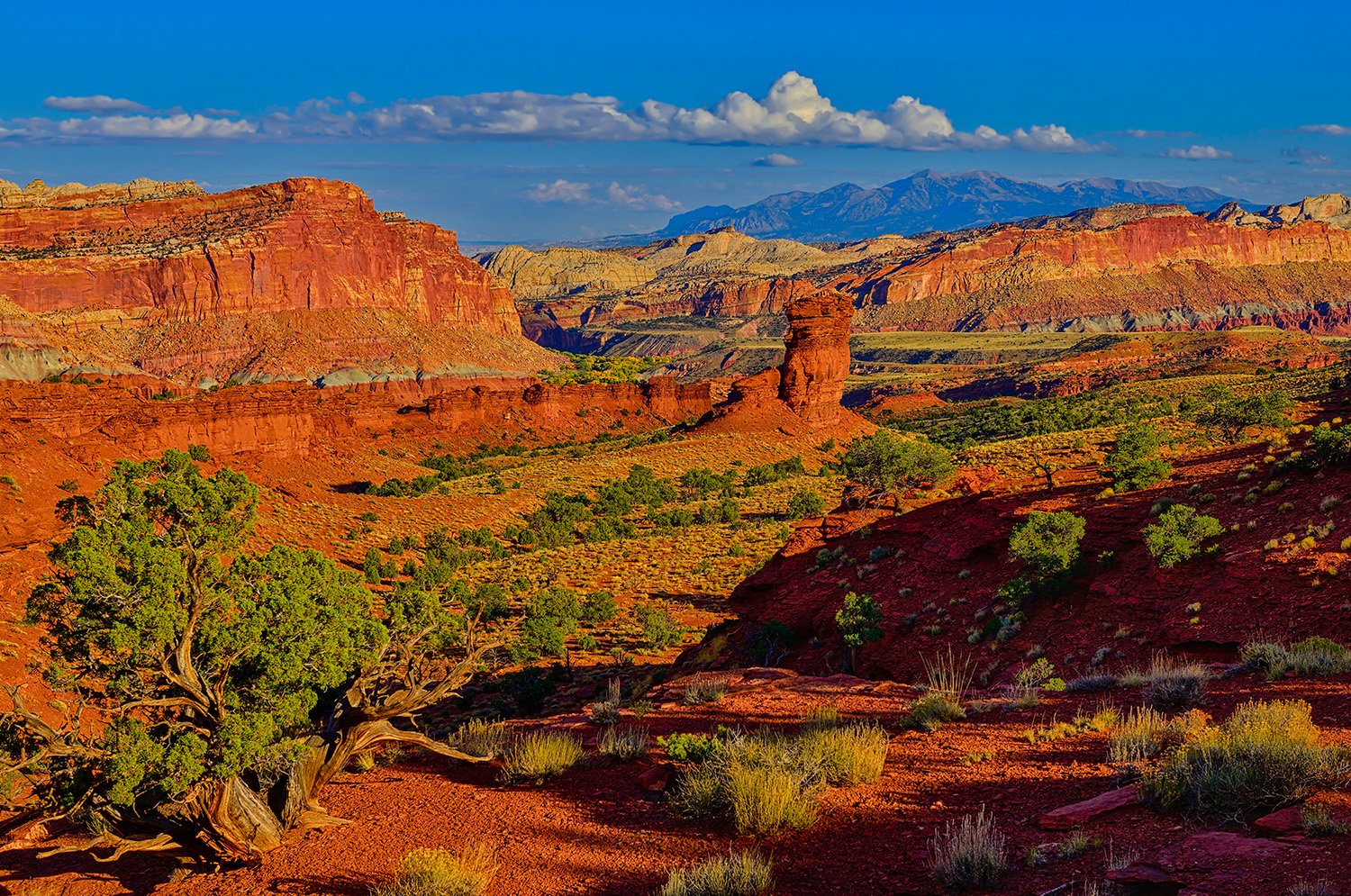Decoding the Southwest: A Geographic Exploration of the American Southwest
Associated Articles: Decoding the Southwest: A Geographic Exploration of the American Southwest
Introduction
With enthusiasm, let’s navigate via the intriguing subject associated to Decoding the Southwest: A Geographic Exploration of the American Southwest. Let’s weave fascinating info and supply contemporary views to the readers.
Desk of Content material
Decoding the Southwest: A Geographic Exploration of the American Southwest

The American Southwest, a area sprawling throughout parts of California, Arizona, New Mexico, Nevada, Utah, Colorado, and even elements of Oklahoma and Texas, is a panorama of dramatic contrasts. From the towering pink rocks of Arizona to the snow-capped peaks of the Rockies, from the arid deserts to the luxurious riparian corridors, the area’s geography is as numerous as its historical past and tradition. Understanding this geographic tapestry requires a nuanced examination, finest approached via a cautious research of its bodily options, local weather, and the human imprint upon the land. This text will delve into the Southwest’s multifaceted geography, utilizing a conceptual map as a framework for exploration.
A Conceptual Map of the Southwest:
Think about a map of the Southwest, not a easy political define, however a layered illustration highlighting key geographical parts. This conceptual map would come with:
-
Main Mountain Ranges: The Rocky Mountains, forming a formidable japanese boundary, their spurs extending into Colorado, New Mexico, and Arizona. The Sierra Nevada and Cascade ranges, dominating California, affect the state’s local weather and water assets. Smaller ranges just like the San Juan Mountains in Colorado and the Transverse Ranges in California contribute to the area’s topographic complexity. Every vary dictates drainage patterns, influencing the placement of settlements and agricultural practices.
-
Deserts and Basins: The huge Mojave, Sonoran, and Chihuahuan deserts occupy vital parts of the Southwest, characterised by aridity, sparse vegetation, and distinctive ecosystems. These deserts are interspersed with basins, geological depressions that always gather water, supporting oases and distinctive plant and animal life. The Nice Basin, primarily in Nevada and Utah, is a very hanging instance, characterised by inner drainage and distinctive salt flats just like the Bonneville Salt Flats.
-
River Techniques: The Colorado River, arguably the lifeblood of the Southwest, carves its method via the area, creating the Grand Canyon and supporting a posh community of tributaries. The Rio Grande, forming a good portion of the border between the US and Mexico, flows via New Mexico and Texas, sustaining life in its riparian zones. Smaller rivers, just like the Gila and the San Juan, contribute to the general hydrological community, though their flows are sometimes considerably impacted by human intervention.
-
Plateaus and Mesas: Excessive-elevation plateaus, just like the Colorado Plateau, dominate parts of Utah, Arizona, Colorado, and New Mexico. These flat-topped landforms are dissected by canyons and mesas, creating spectacular landscapes. The distinctive geology of those plateaus reveals thousands and thousands of years of geological historical past, shaping the area’s iconic surroundings.
-
Human Imprint: Overlaying these pure options can be a illustration of human settlements, agricultural lands, and infrastructure. Historic Puebloan websites, Spanish colonial cities, trendy cities, and in depth irrigation programs all contribute to the complicated relationship between people and the atmosphere within the Southwest.
Exploring the Key Geographic Options:
1. The Affect of Elevation: The Southwest’s dramatic elevation modifications considerably impression its local weather and ecosystems. The excessive mountain ranges obtain substantial snowfall, feeding rivers and supporting alpine ecosystems. As elevation decreases, the local weather turns into progressively drier, transitioning from coniferous forests to shrublands and at last to deserts. This altitudinal variation creates a mosaic of habitats, supporting a exceptional variety of natural world.
2. The Function of Water: Water, or relatively, the shortage of it, is the defining attribute of a lot of the Southwest. The area’s aridity has formed human settlements, agricultural practices, and conflicts over water assets for hundreds of years. The Colorado River, whereas important, is over-allocated, resulting in issues about water safety and the sustainability of its ecosystems. Groundwater depletion is one other vital situation, impacting each ecosystems and human populations.
3. Geological Processes: The Southwest’s dramatic landscapes are the results of thousands and thousands of years of geological processes. Volcanic exercise, tectonic uplift, erosion, and sedimentation have formed the area’s mountains, canyons, deserts, and plateaus. The Grand Canyon, for instance, is a testomony to the facility of the Colorado River to carve via rock over thousands and thousands of years.
4. Local weather Variability: The Southwest is characterised by vital local weather variability, starting from excessive warmth and drought to occasional durations of intense precipitation and flooding. Local weather change is exacerbating these extremes, rising the frequency and depth of droughts and wildfires. Understanding this variability is essential for managing assets and mitigating the impacts of local weather change.
5. Human Impacts: Human actions have considerably altered the Southwest’s landscapes and ecosystems. Urbanization, agriculture, mining, and dam development have all impacted water assets, biodiversity, and air high quality. The legacy of colonialism and its impression on Indigenous populations continues to form the area’s social and environmental dynamics. Sustainable land administration practices are essential for balancing human wants with the preservation of the Southwest’s distinctive pure heritage.
Conclusion:
The Southwest’s geography is a posh interaction of mountains, deserts, rivers, and human actions. Understanding this complicated geography requires a multi-faceted strategy, contemplating the area’s geological historical past, local weather variability, and the human imprint on the land. By recognizing the interconnectedness of those components, we will higher respect the area’s distinctive magnificence and the challenges of managing its assets sustainably for future generations. Our conceptual map serves as a reminder that the Southwest just isn’t merely a set of states, however a dynamic and interconnected ecosystem, demanding cautious stewardship and a deep understanding of its intricate geographical tapestry. Additional analysis into particular areas, such because the impression of local weather change on water assets or the historical past of human settlement within the area, is essential for efficient conservation and accountable growth. Solely via a complete understanding of the Southwest’s geography can we guarantee its preservation for generations to return.







Closure
Thus, we hope this text has offered worthwhile insights into Decoding the Southwest: A Geographic Exploration of the American Southwest. We respect your consideration to our article. See you in our subsequent article!
